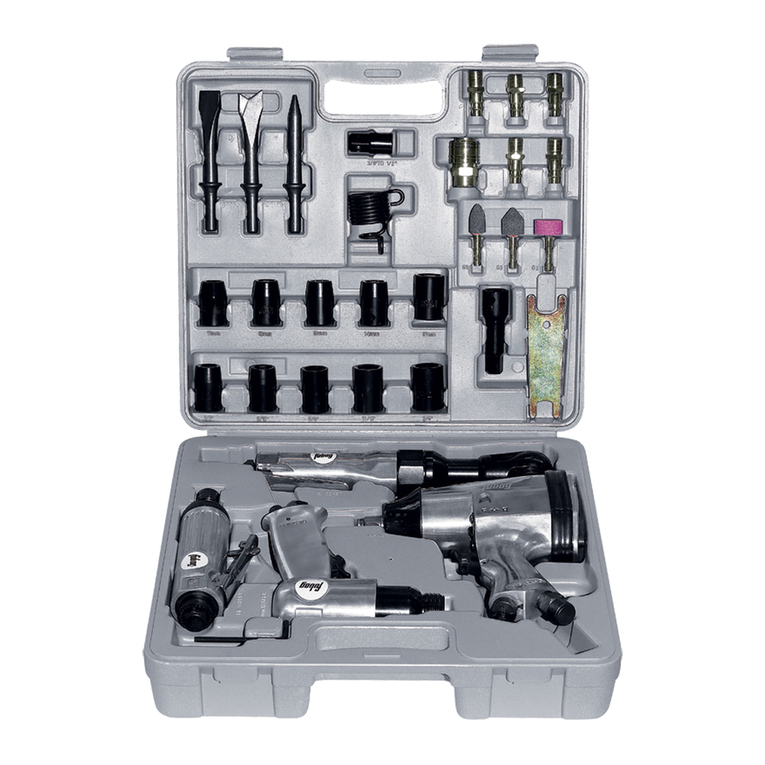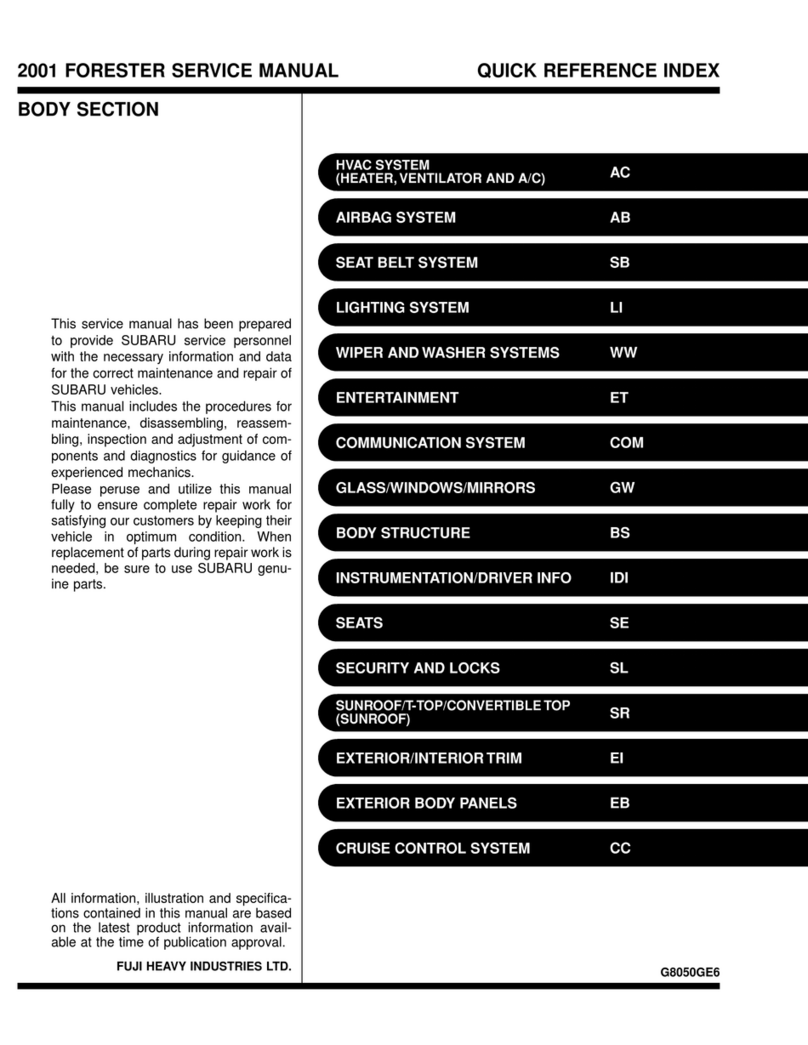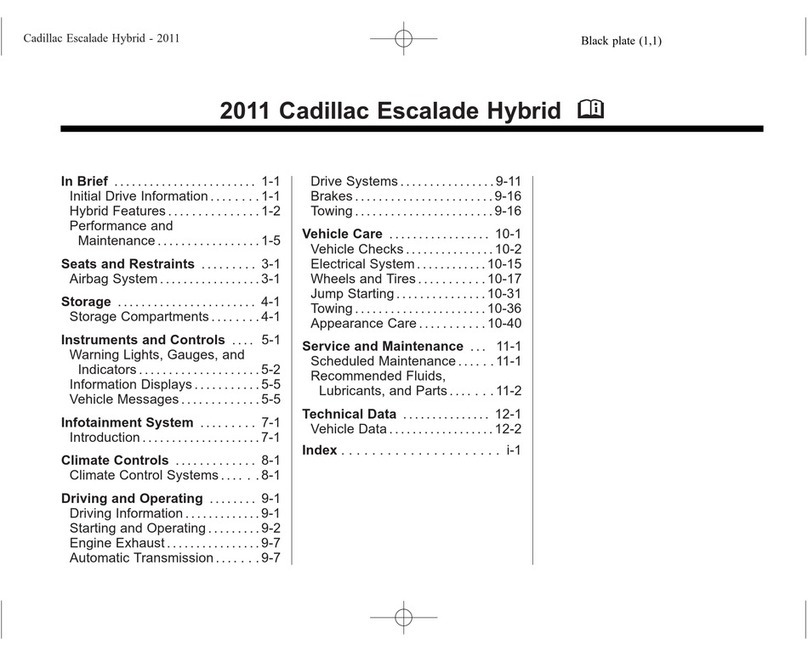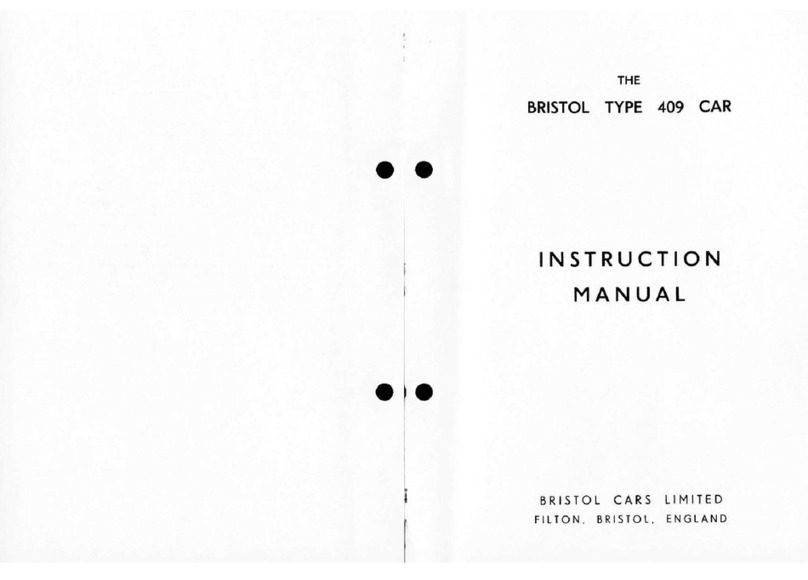Daewoo NUBIRA User manual


SECTION : 9T
IMMOBILIZER ANTI–THEFT SYSTEM
CAUTION : Disconnect the negative battery cable before removing or installing any electrical unit or when a tool
or equipment could easily come in contact with exposed electrical terminals. Disconnecting this cable will help
prevent personal injury and damage to the vehicle. The ignition must also be in LOCK unless otherwise noted.
TABLE OF CONTENTS
SPECIFICATIONS 9T–1. . . . . . . . . . . . . . . . . . . . . . . . . .
FASTENER TIGHTENING
SPECIFICATIONS 9T–1. . . . . . . . . . . . . . . . . . . . . . .
SPECIAL TOOLS 9T–1. . . . . . . . . . . . . . . . . . . . . . . . . . .
SPECIAL TOOLS TABLE 9T–1. . . . . . . . . . . . . . . . . . .
DIAGNOSIS 9T–2. . . . . . . . . . . . . . . . . . . . . . . . . . . . . . . .
IMMOBILIZERANTI–THEFT SYSTEM 9T–2. . . . . . .
DTC 53 – PCM/ECM Immobilized Error 9T–2. . . . . . .
KEY STATUS ERRORS 9T–2. . . . . . . . . . . . . . . . . . . .
COMMUNICATION BETWEEN
IMMOBILIZER AND TEST EQUIPMENT 9T–3. . . .
MAINTENANCE AND REPAIR 9T–4. . . . . . . . . . . . . . .
ON–VEHICLE SERVICE 9T–4. . . . . . . . . . . . . . . . . . . . .
KEY CODING PROCEDURE 9T–4. . . . . . . . . . . . . . .
ID CODE REPROGRAMMING 9T–4. . . . . . . . . . . . . .
TRANSPONDER 9T–5. . . . . . . . . . . . . . . . . . . . . . . . . .
DETECTION COIL 9T–5. . . . . . . . . . . . . . . . . . . . . . . . .
IMMOBILIZER CONTROL UNIT 9T–8. . . . . . . . . . . . .
GENERAL DESCRIPTION AND SYSTEM
OPERATION 9T–10. . . . . . . . . . . . . . . . . . . . . . . . . . . . .
IMMOBILIZER SYSTEM 9T–10. . . . . . . . . . . . . . . . . .
ELECTRONICALLY CODED KEYS 9T–10. . . . . . . . .
DETECTION COIL 9T–10. . . . . . . . . . . . . . . . . . . . . . . .
IMMOBILIZER CONTROL UNIT 9T–10. . . . . . . . . . . .
SERIAL DATA LINK 9T–11. . . . . . . . . . . . . . . . . . . . . . . .
POWERTRAIN CONTROL MODULE
(PCM)/ENGINE CONTROL
MODULE (ECM) 9T–11. . . . . . . . . . . . . . . . . . . . . . . . .
SPECIFICATIONS
FASTENER TIGHTENING SPECIFICATIONS
Application NSm Lb–Ft Lb–In
Immobilizer Control Unit Mounting Bolts 4 – 35
Knee Bolster Mounting Bolts 22 16 –
SPECIAL TOOLS
SPECIAL TOOLS TABLE
Scan Tool

9T – 2IIMMOBILIZER ANTI–THEFT SYSTEM
DAEWOO V–121 BL4
DIAGNOSIS
IMMOBILIZERANTI–THEFTSYSTEM
The immobilizer anti–theft system requires diagnosis
when it is not possible to start the engine. If the no–start
condition occurs because of the immobilizer system, a
diagnostic trouble code (DTC) 53 should be set.
The immobilizer anti–theft system requires diagnosis
when it is not possible to start the engine. If the no–start
condition occurs because of the immobilizer system, a
diagnostic trouble code (DTC) 53 should be set.
Unauthorized use of a scan tool could be a method of de-
feating the immobilizer anti–theft system. Therefore, cer-
tain scan tool procedures require the use of a password.
The following functions are password protected:
SCoding of an additional key.
SDeleting all key codes.
SDeletion of the immobilizer identification (ID) code.
SDeletion of the powertrain control module
(PCM)/engine control module (ECM) ID code.
The following functions do not require a password:
SReading an ignition key to determine if the trans-
ponder is working or if a key is authorized.
SReading the immobilizer ID code to verify that it
matches the PCM/ECM ID code.
DTC 53 – PCM/ECM Immobilized Error
Step Action Value(s) Yes No
1Connect the scan tool using the following procedure:
1. Insert the immobilizer data cartridge into the
scan tool.
2. Turn the ignition OFF.
3. Connect the scan tool to the data link connec-
tor DLC).
4. Turn the ignition ON, but do not start the en-
gine.
Is communication established between the scan tool
and the immobilizer control unit?
Go to Step 2 Go to ”Commu-
nication Be-
tween Immobi-
lizer and Test
Equipment”
2Select SYSTEM DIAGNOSIS from the scan tool
menu.
Does the KEY STATUS message indicate POS NR
(position number) 00?
Go to ’Key
Status Errors” Go to Step 3
3Read the IMMO & PCM/ECM ID–CODE message
that is displayed after requesting SYSTEM DIAG-
NOSIS.
Does the message ID–CODE DIFFERENT appear?
Go to ”ID
Code Repro-
gramming”
Go to Step 4
4Check for an open serial data wire between the im-
mobilizer control unit and the powertrain control
module (PCM)/engine control module (ECM).
Is the circuit open?
Go to Step 5 Go to Step 6
5Repair the open serial data wire between the PCM/
ECM and the immobilizer control unit.
Is the repair complete?
System OK
61. Replace the ECM.
2. Reprogram the identification (ID) code. Refer
to”ID Code Reprogramming” in this section.
Is the repair complete?
System OK
KEY STATUS ERRORS
The following KEY STATUS messages may be shown on
the scan tool after commanding SYSTEM DIAGNOSIS:
SIGNITION OFF STATUS. This message informs
the technician that the ignition is OFF during the
key coding process. Turn the ignition ON during key
coding, but do not start the engine.

IMMOBILIZER ANTI–THEFT SYSTEM 9T – 3
DAEWOO V–121 BL4
SKEY IS OCCUPIED. Only five keys may be coded.
If a new key is desired, the previous key codes
must be deleted. Up to five keys may then be au-
thorized.
SALREADY AUTHORIZED. Key coding is being at-
tempted with a key that is already authorized.
SERROR NO. 001, 002, 003. There is no commu-
nication between the transponder in the ignition key
and the detection coil. Follow the steps below to
diagnose the problem:
1. Try a different key. If a different key works, the
problem is in the original key.
2. If trying a different key results in the same error
message, replace the detection coil.
SINVALID KEY. The communication between the
immobilizer control unit and the key transponder
has not validated the key. Follow the steps below to
diagnose the problem:
1. Code the key. Refer to”Key Coding Procedure”in
this section.
2. If the same message is received after key coding,
check the connection of the detection coil.
3. If the detection coil is okay, replace the immobilizer.
Refer to”Immobilizer Control Unit” in this section.
SNO TRANSPONDER DETECTED. The fault may
be in ignition key transponder, the detection coil, or
the immobilizer. Follow the steps below to diagnose
the problem:
1. Try a different key. If a different key works, the
problem is in the original key.
2. If trying a different key results in the same error
message, check the connection of the detection
coil.
3. If the connection of the detection coil is okay, dis-
connect the detection coil and use an ohmmeter to
check for an open detection coil.
4. If the detection coil is not open, replace the immobi-
lizer control unit. Refer to”Immobilizer Control Unit”
in this section.
COMMUNICATION BETWEEN
IMMOBILIZER AND TEST
EQUIPMENT
1. Connect the test equipment as described in theS-
can Tool Equipment Manual.
2. If communication between the scan tool and the
test equipment is unsuccessful, wait 30 seconds
and try again.
3. If communication is not successful on the second
try, turn the ignition OFF, and check the wire and
the connectors between the immobilizer control unit
terminal 3 and the data link connector (DLC).
4. If the wire and the connectors between the DLC
and the immobilizer control unit are OK, replace the
immobilizer control unit. Refer to ”Immobilizer Con-
trol Unit”in this section.

9T – 4IIMMOBILIZER ANTI–THEFT SYSTEM
DAEWOO V–121 BL4
MAINTENANCE AND REPAIR
ON–VEHICLE SERVICE
KEY CODING PROCEDURE
1. Install the immobilizer control unit cartridge in the
scan tool.
2. Turn the ignition OFF
3. Connect the scan tool.
4. Turn the ignition ON with the key to be coded.
5. Enter the four–digit password that enables service
personnel to use the scan tool for coding keys.
6. A lost key can be deleted only by deleting all keys
and reauthorizing the remaining keys as new keys.
If a key is lost, go to the next step. If no keys have
been lost but an additional key is desired, go to
Step 8.
7. Use the scan tool command DELETE ALL KEY
CODES.
8. Use the scan tool command AUTHORIZE ONE
ADDITIONAL KEY.
9. Repeat Steps 4, 5, and 6 until the immobilizer con-
trol unit has recorded all of the new keys or, after a
deletion, has reauthorized all of the remaining keys.
The immobilizer control unit can record a maximum
of five keys.
10. Return the system to the normal mode.
11. Turn the ignition OFF.
12. Turn the ignition ON.
13. Start the engine.
ID CODE REPROGRAMMING
Reprogram the identification (ID) code in the following si-
tuations:
1. An immobilizer control unit has been replaced.
2. An electronic control module (ECM) has been re-
placed.
If a valid key has been lost, refer to”Key Coding Proce-
dure” in this section.
Reprogramming Procedure
1. Turn the ignition OFF. Reprogramming is not al-
lowed while the engine is running.
2. Insert the immobilizer control unit cartridge into the
scan tool.
3. Turn the ignition ON, but do not start the vehicle.
4. Enter the four–digit password that enables service
personnel to use the scan tool for ID code repro-
gramming.
5. Use the scan tool to command RESET ID CODE.

IMMOBILIZER ANTI–THEFT SYSTEM 9T – 5
DAEWOO V–121 BL4
6. Turn the ignition OFF and ON again, but do not
crank or start the engine. The powertrain control
module (PCM)/engine control module (ECM) will
reset the ECM ID code to match the new ID code
that was calculated and sent by the immobilizer
control unit when the ignition was first turned ON
after the reset command.
7. Return the system to the normal mode.
8. Turn the ignition OFF.
9. Turn the ignition ON.
10. Start the engine.
After reprogramming the ID code, the scan tool SYSTEM
DIAGNOSIS command can verify that the PCM/ ECM ID
code matches the immobilizer control unit ID code.
If the reprogramming procedure does not result in match-
ing ID codes, check the electrical connectors for the serial
data wire between the immobilizer control unit and the
PCM/ECM.
TRANSPONDER
If a transponder is faulty, the ignition key must be replaced.
It is not possible to install a new transponder into a key.
DETECTION COIL
Removal Procedure
1. Carefully pull the knee bolster trim panel until it is
loose from its retaining clips.

9T – 6IIMMOBILIZER ANTI–THEFT SYSTEM
DAEWOO V–121 BL4
2. Slide the knee bolster trim panel upward and pull it
outward to remove it.
3. Remove the instrument panel side cover.
4. Remove the bolts and the knee bolster.
5. Remove the steering column lower cover. Refer
toSection 6E, Steering Wheel and Column.
6. Disconnect the two–pin connector from the immobi-
lizer.

IMMOBILIZER ANTI–THEFT SYSTEM 9T – 7
DAEWOO V–121 BL4
7. Pry the detection coil away from the lock cylinder. If
the detection coil will be replaced with a new one, it
does not matter if the key position trim ring is dam-
aged during removal. A new trim ring is part of the
new detection coil.
Installation Procedure
1. Install the detection coil by pressing it onto the lock
cylinder until it snaps in place.
2. Connect the two–pin connector to the immobilizer.
3. Install the steering column lower cover. Refer to
Section 6E, Steering Wheel and Column.
4. Install the knee bolster with the bolts.
Tighten
Tighten the knee bolster mounting bolts to 22 NSm (16
lb–ft)
5. Install the instrument panel side cover.
6. Install the knee bolster trim panel.

9T – 8IIMMOBILIZER ANTI–THEFT SYSTEM
DAEWOO V–121 BL4
IMMOBILIZER CONTROL UNIT
Removal Procedure
1. Disconnect the negative battery cable.
2. Carefully pull the knee bolster trim panel loose from
its retaining clips.
3. Slide the knee bolster trim panel upward and pull it
outward to remove it.
4. Remove the instrument panel side cover.
5. Remove the bolts and the knee bolster.
6. Remove the bolts and the immobilizer control unit.
7. Disconnect the electrical connectors from the im-
mobilizer control unit.

IMMOBILIZER ANTI–THEFT SYSTEM 9T – 9
DAEWOO V–121 BL4
Installation Procedure
1. Connect the electrical connectors to the immobilizer
control unit.
2. Install the immobilizer control unit with the bolts.
Tighten
Tighten the immobilizer control unit mounting bolts to
4 NSm (35 lb–in).
3. Install the knee bolster with the bolts.
Tighten
Tighten the knee bolster mounting bolts to 22 NSm (16
lb–in).
4. Install the instrument panel side cover.
5. Install the knee bolster trim panel.
6. Connect the negative battery cable.
Important :After replacing the immobilizer, the keys must
be re–authorized using the key coding procedure. Refer
to”Key Coding Procedure” in this section. Also, the elec-
tronic control module (ECM) identification (ID) code must
be reset. Refer to”ID Code Reprogramming” in this sec-
tion.

9T – 10IIMMOBILIZER ANTI–THEFT SYSTEM
DAEWOO V–121 BL4
GENERAL DESCRIPTION
AND SYSTEM OPERATION
IMMOBILIZER SYSTEM
The purpose of the immobilizer system is to prevent the
vehicle from being stolen or driven by unauthorized users.
Users are authorized by an electronically coded key.
When the ignition is turned ON, the key is tested by the im-
mobilizer system. While the key code is being read by the
immobilizer control unit, the engine can start and run with
any key that will turn the lock cylinder. The key code is read
and compared with key codes that have been stored in the
immobilizer control unit’s memory.
If a valid key is detected, the immobilizer control unit sends
a serial data release message to the powertrain control
module (PCM)/engine control module (ECM). Included in
the release message is an identification (ID) code which
assures that neither the immobilizer control unit nor the
PCM/ECM has been substituted to defeat the system.
If the PCM/ECM does not receive a release message with-
in a specified time, or if the ID codes do not match, the
PCM/ECM performs the following actions:
SDisables the fuel injector circuit.
SDisables the fuel pump circuit.
SDisables the ignition coil.
SSets diagnostic trouble code (DTC) 53.
The above conditions are maintained until the ignition is
turned OFF.
The immobilizer control unit system consists of the follow-
ing components:
SElectronically coded keys.
SDetection coil.
SImmobilizer control unit.
SPCM/ECM.
SInstrument cluster indicator.
SA data link connector (DLC) to provide serial data
access for a scan tool.
A PCM/ECM for a vehicle without an immobilizer control
unit cannot be interchanged with a PCM/ECM that is used
with an immobilizer control unit system. The immobilizer
control unit and the PCM/ECM must have a matching ID
code. ID coding and key coding are accomplished by using
a scan tool.
ELECTRONICALLY CODED KEYS
Each valid ignition key has an internal transponder which
transmits a unique code. When a key is inserted into the
ignition lock, the transponder is inductively coupled to the
detection coil. The transponder interacts with the detec-
tion coil to generate an amplitude modulated modulated
signal which is conducted from the detection coil to the im-
mobilizer control unit. The immobilizer control unit reads
the radio–frequency signal. A release message is sent to
the powertrain control module (PCM)/engine control mod-
ule (ECM) if the key is authorized.
New keys are coded by using a scan tool. Refer to in this
section.”Key Coding Procedure”
DETECTION COIL
A detection coil is mounted at the ignition lock as an inte-
gral part of the key position trim ring. The wires to and from
the detection coil are connected to the immobilizer. When
the ignition is turned ON, the immobilizer energizes the
detection coil and the coil is coupled inductively to the
transponder in the ignition key. The immobilizer sends a
modulated signal to the detection coil. The signal is
changed by interaction with the internal transponder in the
ignition key. The immobilizer reads the signal from the
detection coil and determines whether the key is autho-
rized.
IMMOBILIZER CONTROL UNIT
The immobilizer control unit is an electronic module in the
instrument panel which verifies the validity of an ignition
key when the ignition is turned ON.
To accomplish its purpose, the immobilizer control unit
performs the following actions:
SLearns and stores the codes of valid keys.
SReads the radio frequency input from the ignition
key.
SCompares the received code with the codes of the
valid keys.
SSends a release message to the powertrain control
module (PCM)/engine control module (ECM) if a
valid key has been presented.
SCalculates and transmits identification (ID) codes
within each release message.
SControls the external relay which interrupts the
starter relay circuit.
SControls the status indicator in the instrument clus-
ter.
SMonitors system faults.
SSupports system test functions.
Normal Operation
When the ignition is turned ON, the immobilizer control
unit tries to read the key code transmitted by the trans-
ponder in the ignition key.
If a valid key is detected, the immobilizer control unit sends
a release message to the PCM/ECM. The release mes-
sage contains an ID code. Immobilization will be per-
formed by the PCM/ECM if no release message is re-
ceived, or if the ID code in the PCM/ECM does not match
the immobilizer control unit ID code.
If a non–valid key is detected, the release message is not
sent to the PCM/ECM.
When the driver turns the ignition OFF, the immobilizer
control unit switches to the active mode.

IMMOBILIZER ANTI–THEFT SYSTEM 9T – 11
DAEWOO V–121 BL4
Data Link Connector (DLC)
When the ignition is ON, a scan tool can switch the immo-
bilizer control unit to the data link connector (DLC) mode
for the purpose of diagnostics, key coding, or ID coding.
ID Code Handling
One of 65,535 possible ID codes is stored in the immobiliz-
er control unit’s memory.
The ID code can be erased by using the scan tools’RESET
ID CODE command. When the immobilizer control unit
calculates a new ID code, the PCM/ECM ID code must be
reset to match the immobilizer control unit ID code. To re-
set the ID code, refer to ”ID Code Reprogramming.”
During diagnostic procedures, the ID code can be read for
comparison with the PCM/ECM ID code by using the scan
tool’s READ IMMOBILIZER CONTROL UNIT IDCODE
command.
SERIAL DATA LINK
Serial data can be exchanged between a scan tool, the
powertrain control module (PCM)/engine control module
ECM), and the immobilizer control unit.
The scan tool connection is the data link connector (DLC).
POWERTRAIN CONTROL MODULE
(PCM)/ENGINE CONTROL MODULE
(ECM)
When the powertrain control module (PCM)/engine con-
trol module (ECM) detects that the ignition is being turned
ON, the PCM/ECM waits for a release message from the
immobilizer control unit. If a release message is not re-
ceived within a specified time, the PCM/ECM disables the
engine. The engine is also disabled if the identification (ID)
code transmitted by the immobilizer control unit does not
match the code stored in the PCM/ECM’s memory. Immo-
bilization remains in effect until the ignition is turned OFF,
or until battery power is removed.
To prevent the vehicle from being driven, the PCM/ECM
applies the following strategy:
SThe ignition module is put in a bypass mode.
SThe PCM/ECM will not create an electronic spark
timing (EST) output. Therefore, no spark will be
generated by the ignition coil.
SThe PCM/ECM will not enable the fuel pump.
SThe PCM/ECM will not enable the fuel injectors.
SThe PCM/ECM sets diagnostic trouble code (DTC)
53.
Serial data communication is transmitted on a single wire
between the immobilizer control unit and the PCM/ ECM.
During diagnostic procedures or ID code changing, a scan
tool is added to the communication system.
A PCM/ECM with an immobilizer control unit is not ex-
changeable with a PCM/ECM that does not have an immo-
bilizer control unit.

SECTION : 9T
REMOTE KEYLESS ENTRY AND
PERIMETER/ULTRASONIC ANTI–THEFT SYSTEM
CAUTION : Disconnect the negative battery cable before removing or installing any electrical unit or when a tool
or equipment could easily come in contact with exposed electrical terminals. Disconnecting this cable will help
prevent personal injury and damage to the vehicle. The ignition must also be in LOCK unless otherwise noted.
TABLE OF CONTENTS
SPECIFICATIONS 9T–1. . . . . . . . . . . . . . . . . . . . . . . . . .
FASTENER TIGHTENING SPECIFICATIONS 9T–1.
SCHEMATIC AND ROUTING DIAGRAMS 9T–2. . . . .
REMOTE KEYLESS ENTRY AND ANTI–THEFT
SYSTEM (1 OF 2) 9T–2. . . . . . . . . . . . . . . . . . . . . . .
REMOTE KEYLESS ENTRY AND ANTI–THEFT
SYSTEM (2 OF 2) 9T–3. . . . . . . . . . . . . . . . . . . . . . .
CONTROL MODULE/RECEIVER CONNECTOR 9T–
4
WIRING HARNESS CONNECTORS 9T–4. . . . . . . . .
MAINTENANCE AND REPAIR 9T–5. . . . . . . . . . . . . . .
ON–VEHICLE SERVICE 9T–5. . . . . . . . . . . . . . . . . . . . .
CONTROL MODULE/RECEIVER 9T–5. . . . . . . . . . . .
SIREN 9T–5. . . . . . . . . . . . . . . . . . . . . . . . . . . . . . . . . . .
FRONT DOOR TAMPER SWITCH 9T–7. . . . . . . . . . .
REAR DECK LID TAMPER SWITCH 9T–7. . . . . . . . .
HOOD OPEN SWITCH 9T–8. . . . . . . . . . . . . . . . . . . . .
PASSWORD PROGRAMMING 9T–10. . . . . . . . . . . . .
GENERAL DESCRIPTION AND SYSTEM
OPERATION 9T–11. . . . . . . . . . . . . . . . . . . . . . . . . . . . . .
REMOTE KEYLESS ENTRY AND ANTI–THEFT
SYSTEM 9T–11. . . . . . . . . . . . . . . . . . . . . . . . . . . . . . .
REMOTE LOCKING AND UNLOCKING 9T–11. . . . . .
SECURITY INDICATOR 9T–11. . . . . . . . . . . . . . . . . . . .
INTRUSION SENSING 9T–11. . . . . . . . . . . . . . . . . . . . .
SIREN 9T–11. . . . . . . . . . . . . . . . . . . . . . . . . . . . . . . . . . .
VEHICLE LOCATOR 9T–12. . . . . . . . . . . . . . . . . . . . . .
AUTOLOCKING (SAFETY LOCK) 9T–12. . . . . . . . . .
CONTROL MODULE/RECEIVER 9T–12. . . . . . . . . . .
FAULT OR ALARM INDICATION 9T–12. . . . . . . . . . .
PANIC BUTTON 9T–12. . . . . . . . . . . . . . . . . . . . . . . . . .
SPECIFICATIONS
FASTENER TIGHTENING SPECIFICATIONS
Application NSm Lb–Ft Lb–In
Hood Open Switch Mounting Screw 8 – 71
Siren Bracket Mounting Bolt 22 16 –

9T –2IREMOTE KEYLESS ENTRY AND ANTI–THEFT SYSTEM
DAEWOO V–121 BL4
SCHEMATIC AND ROUTING DIAGRAMS
REMOTE KEYLESS ENTRY AND ANTI–THEFT SYSTEM (1
OF 2)

REMOTE KEYLESS ENTRY AND ANTI–THEFT SYSTEM 9T –3
DAEWOO V–121 BL4
REMOTE KEYLESS ENTRY AND ANTI–THEFT SYSTEM (2
OF 2)

9T –4IREMOTE KEYLESS ENTRY AND ANTI–THEFT SYSTEM
DAEWOO V–121 BL4
CONTROL MODULE/RECEIVER CONNECTOR
WIRING HARNESS CONNECTORS

REMOTE KEYLESS ENTRY AND ANTI–THEFT SYSTEM 9T –5
DAEWOO V–121 BL4
MAINTENANCE AND REPAIR
ON–VEHICLE SERVICE
CONTROL MODULE/RECEIVER
Removal Procedure
1. Disconnect the negative battery cable.
2. Remove floor console left side forward trim panel.
Refer to Section 9G, Interior Trim.
3. Disconnect the control module/receiver electrical
connector.
4. Slide the control module/receiver toward the rear of
the vehicle and remove it.
Installation Procedure
1. Install the control module/receiver by sliding it onto
its bracket.
2. Connect the control module/receiver electrical con-
nector.
3. Install the floor console left side forward trim panel.
Refer to Section 9G, Interior Trim.
4. Connect the negative battery cable.
SIREN
Removal Procedure
1. Remove several screws to boosen the forward half
of the right front wheel well splash shield.

9T –6IREMOTE KEYLESS ENTRY AND ANTI–THEFT SYSTEM
DAEWOO V–121 BL4
2. Remove the siren electrical connector.
3. Remove the siren bracket mounting bolt.
4. Remove the siren.
Installation Procedure
1. Install the siren on the siren bracket with the mount-
ing screws.
Tighten
Tighten the siren bracket mounting bolts to 22 NSm
(16 lb–in).
2. Connect the siren electrical connector.

REMOTE KEYLESS ENTRY AND ANTI–THEFT SYSTEM 9T –7
DAEWOO V–121 BL4
FRONT DOOR TAMPER SWITCH
Removal Procedure
1. Disconnect the negative battery cable.
2. Remove the front door trim panel. Refer to Section
9G, Interior Trim.
3. Disconnect the door tamper switch electrical con-
nector.
4. Remove the front door lock and the integral door
tamper switch. Refer toSection 9P, Doors.
Installation Procedure
1. Install the front door lock and the integral door tam-
per switch. Refer toSection 9P, Doors.
2. Install the door tamper switch electrical connector.
3. Install the front door trim panel. Refer to Section
9G, Interior Trim.
4. Connect the negative battery cable.
REAR DECK LID TAMPER SWITCH
Removal Procedure
1. Disconnect the negative battery cable.
2. Disconnect the rear deck lid tamper switch electri-
cal connector from the tamper switch.
3. Remove the rear deck lid tamper switch.

9T –8IREMOTE KEYLESS ENTRY AND ANTI–THEFT SYSTEM
DAEWOO V–121 BL4
Installation Procedure
1. Install the rear deck lid tamper switch.
2. Connect the rear deck lid tamper switch electrical
connector to the tamper switch.
3. Connect the negative battery cable.
HOOD OPEN SWITCH
Removal Procedure
1. Disconnect the negative battery cable.
2. Disconnect the electrical connector from the hood
open switch.
3. Remove the mounting screw from the hood open
switch.
4. Remove the hood open switch.
Other manuals for NUBIRA
2
Table of contents
Other Daewoo Automobile manuals

Daewoo
Daewoo NUBIRA User manual

Daewoo
Daewoo MUSSO User manual

Daewoo
Daewoo NUBIRA User manual

Daewoo
Daewoo MUSSO User manual
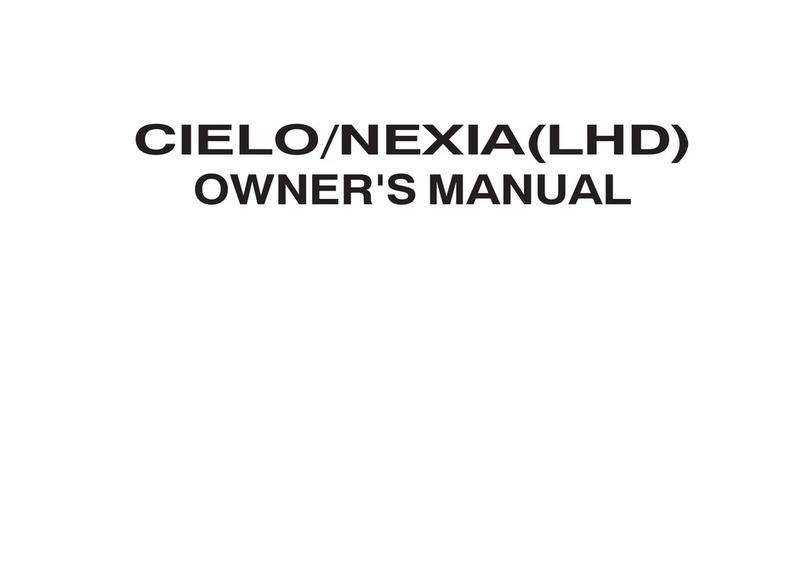
Daewoo
Daewoo Cielo User manual

Daewoo
Daewoo RACER 1998 Quick start guide

Daewoo
Daewoo Lanos 2002 User manual

Daewoo
Daewoo TACUMA User manual

Daewoo
Daewoo TACUMA Operating instructions

Daewoo
Daewoo Kalos User manual

